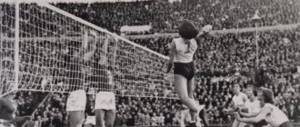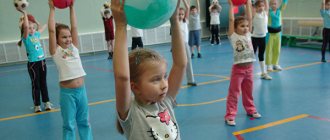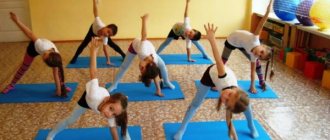History of the origin and development of swimming
The widespread finds of archaeologists indicate that people learned to swim a very long time ago. Rather, learning to swim was initiated by foraging and warfare.
In 1515, the first swimming competitions were held in Venice. In 1869, the first amateur swimming school was opened in England (the Association of Amateur Sports Swimming of England). A little later, similar schools appeared in Sweden, Germany, Hungary, France, the Netherlands, the USA, New Zealand, Russia, Italy and Austria.
At the end of the 19th century, there was a surge in the popularity of water sports, a prerequisite for this was the appearance of artificial swimming pools.
From 1896 to the present day, swimming has been included in the program of the Olympic Games. In 1899, a major championship was held among European countries, which was called the “European Championship”.
In 1908, the International Swimming Federation (FINA) developed and fixed the main distances for competitions, as well as the procedure for conducting swims.
Message 3
Swimming is a sport, the main task in swimming is to overcome all kinds of distances in the shortest time. All this takes place in the pool and at times for more experienced athletes in the sea. The Olympic Games include not only swimming, but also water polo, diving from various positions into the water and synchronized team swimming. If you look in the dictionary, the word swimming means all water sports taken together. Swimming has a large number of options.
For example, free style. This is a discipline in which a swimmer has the opportunity to swim in any method and style that is comfortable for him, including changing them on the fly. But, as a rule, almost all swimmers use this type of swimming like crawl. There is a similar style of swimming as breaststroke and is also often used by athletes. But the swimmer does not have the opportunity to be completely immersed and must always be above part of the water, but only halfway, or completely plunge only 5 meters.
Backstroke. More than 100 years ago, this species was included as a separate species in the Olympic Games. This style of swimming is called an inverted breaststroke. The athlete sits facing the bedside table and holds the handrail with his hands. At this moment, your feet must rest against the side of the pool. The athlete must swim on his back and at times change the state of his head, turning in different directions.
Less than 100 years ago, breaststroke swimming was included in the Olympic Games. An even faster version of this type is the butterfly, which is actually translated as a butterfly from the British language. The swimmer must swim on his chest and turning on his back is strictly prohibited. Everything happens in one order. At the beginning, a stroke with the arms, and then a push with the legs. Hands should be approximately at chest level and should not go beyond the hips. At any turn and at the finish line, you must touch with both hands. The head should not be completely submerged under water.
There are integrated and combined swimming. This is a complex discipline in which the swimmer first swims in the butterfly style, then in the backstroke, breaststroke and finally in the free style. All these styles must be in equal proportions. The combined is a relay race in which athletes have the opportunity to use any of the styles, for example, backstroke, breaststroke or butterfly. And any style other than those listed above will be considered a free look. Medley swimming was added in 1961, and combined swimming in 1957.
In the Olympic Games there were also extraordinary types of swimming, for example, in clothes, with obstacles and long-distance diving.
Swimming styles in the pool
There are 4 styles in competitive swimming:
Crawl is the fastest type of swimming, which is characterized by alternating and symmetrical movements of the arms and legs. Each hand makes a wide stroke along the axis of the swimmer's body, while the legs alternately rise and fall.
The back crawl is a swimming style that is visually very similar to the regular crawl. The athlete also performs alternate strokes with his arms with alternate raising and lowering of his legs, but swims on his back and carries a straight arm over the water.
Breaststroke is a type of swimming in which the athlete lies on his chest and performs symmetrical movements with his arms and legs in a plane that is parallel to the water surface.
Butterfly is one of the most technically difficult and tiring swimming events. When moving in butterfly, the athlete makes a wide and powerful stroke, lifting the swimmer's body above the water, and the legs and pelvis make wave-like movements. It is considered the second fastest after the crawl.
There is freestyle swimming, which is usually understood as a discipline in which the athlete is allowed to swim in any way. Currently, all athletes use the crawl style, as it is the fastest style.
On the topic: methodological developments, presentations and notes
It is believed that the safest place where a child can develop healthy is a swimming pool. Swimming in the pool, the child develops effectively. If your child goes swimming regularly, then...
Information for schoolchildren
In the old days they said that water cures all diseases. Swimming strengthens all muscles and makes internal organs work normally.
The advantage of this sport is that it can be practiced at any time of the year: in cold weather - in the pool, and in summer - in a suitable body of water.
It is best to start swimming lessons at a very young age, as it is easier for children to overcome the resistance of water, and their joints are very mobile. Nature has endowed children with everything they need to learn how to float perfectly on the water, but in order to become a real professional swimmer, a lot of work and hard training will be required.
Crawl
- the fastest swimming method, which is chosen by almost all athletes - swimmers, when they have to swim a distance in freestyle. Each swimmer chooses a certain swimming style as the main one, because for him it is the most convenient and fastest.
Breaststroke
- an ancient method of swimming, which was known at the beginning of the 14th century.
Outwardly, it resembles the movement of a frog in water and does not allow one to develop such speed as the crawl, but the athlete has the opportunity to save his strength. Breaststroke is preferred by long distance swimmers.
Butterfly, both hands of the athlete simultaneously leave the water, sweep over their heads, making powerful strokes. Such movements resemble the flapping of a butterfly's wings, hence the name of this style. The swimmer's legs move like those of a frog. Butterfly, like crawl, is a fast way of swimming.
Backstroke is a style of swimming that is visually similar to crawl (arms perform alternate strokes, and legs perform alternate continuous raising/lowering), but has the following differences: a person swims on his back, not on his stomach, and the lift over the water is performed with a straight arm , and not bent, as in the crawl. Third fastest swimming style at distances up to 200 meters
Read the question, think, choose one of the three proposed answer options.
If you answered correctly, answer the next question; if you answered incorrectly, return to the question and choose another option .
What is the fastest swimming method, chosen by almost all swimmers?
- Butterfly
- Back crawl
- Crawl
Which type of swimming resembles that of a frog?
- Butterfly
- Back crawl
- Breaststroke
In what style do both arms of an athlete come out of the water at the same time?
- Crawl
- Back crawl
- Butterfly
What additional sports can a swimmer engage in?
- Skates
What is the third fastest swimming style?
- Crawl
- Butterfly
- Back crawl
Classes in the pool are conducted according to a swimming program developed in accordance with SanPiN 2.4.2.1178-02, approved by the Chief Sanitary Doctor of the Russian Federation 5.12.02 No. 3997. The basic part of the content of the educational material of the Work Program is fully consistent with the comprehensive program for the development, upbringing and education of children from 1 year to 7 years “From childhood to adolescence” by T.N. Doronova, L.N. Galiguzova, L.G. Golubeva and others (Moscow publishing house “Prosveshchenie”, 2007) and the comprehensive physical education program for students in grades 1-11 by V.I. Lyakh and A.A. Zdanevich (Moscow publishing house “Prosveshchenie”, 2006).
The variable part is based on the program “Teaching swimming to children from 2 to 7 years old” by T.A. Protchenko, Yu.A. Semenova (Moscow 2007) on the program “Education and training in kindergarten” by M.A. Vasilyeva, V.V. .Gerbova, M.S.Komarova (Moscow Mosaic - Synthesis 2005). The program is certified “Approved by the Ministry of Education and Science of the Russian Federation.”
Feature of this program
is the use of modern effective technology - a simultaneous teaching method for all lightweight, non-sports and sports methods of swimming, starting in junior groups. Classes for all children are held on the “big water”.
Important in classes
swimming is that children learn the rules of behavior on the water.
The use of health-saving technology
allows children to correctly navigate in extreme life situations. To do this, the classes include exercises such as: 1. Exhale into the water
2. Falls into the water
3. Swimming with clothes on
4. Implementation of methods of transportation, towing, carrying cargo over water
5. Swim as far as possible
6. Swimming with obstacles
7. Diving under water, etc.
Based on the results of analyzes of work in the pool, the level of mastery of the swimming program for children who regularly visit the pool, primary schools and kindergartens increases annually. It has been revealed that children who visit the pool get sick less.
The pool hosts not only water sports festivals, relay races, fun starts, the game “Water Polo”, but also holidays on the water - “New Year”, “March 8”, “May 9”, “Fairytale performances” and the annual traditional “ Neptune's Festival."
Pool
A swimming pool is a rectangular bathtub designed for water sports. For sport swimming, the dimensions of the pool should be:
- 50 meters long and 25 meters wide (for paths 2.5 meters wide);
- 50 meters long and 21 meters wide (for 10 tracks 2 meters wide);
- 25 meters long and 16 meters wide (for 8 tracks 1.9 meters wide);
- 25 meters long and 11 meters wide (for 6 tracks 1.75 meters wide);
- 25 meters long and 8.5 meters wide (for 5 tracks 1.6 meters wide).
According to FINA rules, baths must be 50 meters long and 25 meters wide. The pool should be divided into 8 lanes.
The stripes of paths are separated from each other by dividing garlands of floats with a diameter of 5-15 cm. The first and last 5 meters of each of them consist of red floats. The rest of the space is filled with green floats for tracks 1 and 8, blue for tracks 2, 3, 6 and 7, and yellow for tracks 4 and 5.
The water temperature should be between 25 - 29 degrees.
Slide captions:
Waves during swimming and water flow have a kind of massaging effect. All this has an excellent healing effect on the child’s body. Swimming differs from all technologies of physical development in two unique features: when swimming, the human body is in a special environment - water; movements are performed in a horizontal position.
Swimming is called the ideal form of movement. Indeed, no sport has such great hygienic, health and medicinal importance as swimming. This is explained by many factors. First of all, the aquatic environment itself and the physical, mechanical, biological and temperature effects it creates are the cause of many beneficial reactions of the body, stimulating the functional development of all its systems.
Equipment
Swimming equipment is designed to provide maximum comfort and also reduce water resistance. Swimming equipment includes:
- A swimming cap is a headgear for swimming in water that protects the swimmer’s hair from chlorinated water. Swimming caps are available: latex, silicone, fabric and combined.
- Swimming trunks or sports swimsuit - swimming briefs made of a special material (polyamide with the addition of lycra or a mixture of polyester and PBT).
- Swimming goggles are an accessory for sports swimming, which is designed to ensure normal vision under water and also protect the eyes from chlorine fumes.
Swimming grades 1-4
The program is focused on swimming training for elementary school students.
The main form of organizing swimming lessons is a lesson. Lessons are conducted in the same way as in other disciplines, using frontal, group, flow and other methods, but taking into account specific conditions. The choice depends on the tasks set, the preparation of students, their number in the group (class), and the pool allocated for classes.
During the learning process, they select and apply those means and methods with which they can quickly and efficiently solve the assigned tasks.
The teacher needs to psychologically prepare students for the upcoming educational work, taking into account their interests and needs, stimulating and motivating their activities.
The lesson consists of three parts: introductory, main and final.
Introductory part
is carried out on land and includes an explanation of the tasks, the organization of students and their functional and psychological preparation for the main part of the lesson. performing familiar general developmental exercises and becoming familiar on land with those elements of movement techniques that children will then do in the water. All this creates favorable conditions for the functioning of the cardiovascular and respiratory systems of the body and prepares students to complete the tasks of the main part of the lesson.
In the main part
The lesson solves the problem of mastering the elements of swimming technique. The technique of sports swimming methods, starts and turns is studied and improved.
In the final part
it is necessary to reduce physical and emotional stress. At the end of the lesson, children swim calmly and do breathing exercises. The lesson ends with summing up, assigning feasible exercises at home and organized care.
When teaching schoolchildren, especially younger grades, much attention should be paid to games in water. Properly selected games will help children who cannot swim quickly get used to the water, and those who can swim will successfully consolidate what they have learned. In classes with non-swimmers, playing in the water is given a significant place.
Games in water can be divided into games
for mastering the water and games that promote the study of swimming movements;
improvement in technology.
Studying sports swimming techniques
carried out in a strict methodological sequence. The technique is studied separately in the following order:
Body position.
Breath.
Leg movements.
Hand movements.
General coordination of movements.
At the same time, the mastery of each element of the technique is carried out in gradually more complex conditions, which ultimately involve performing exercises in a horizontal, unsupported position, which is the swimmer’s working position.
Judging in swimming
The chief judge is responsible for conducting swimming competitions and also heads the panel of judges.
Starter - calls athletes to the start, checks the correctness of the occupied starting positions and gives the command to start.
Timekeeper - measures the time of a swimmer on a certain track from start to finish.
Finish judge - determines the order in which participants arrive at the finish line, in the absence of an automated system for determining winners.
Turn Judge - determines the correctness of turns on the lane assigned to him.
Technical judge - monitors the technique of performing the appropriate swimming style.







